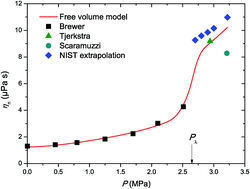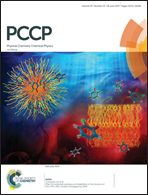A thermodynamic model to predict electron mobility in superfluid helium
Abstract
Electron mobility in superfluid helium is modeled between 0.1 and 2.2 K by a van der Waals-type thermodynamic equation of state, which relates the free volume of solvated electrons to temperature, density, and phase dependent internal pressure. The model is first calibrated against known electron mobility reference data along the saturated vapor pressure line and then validated to reproduce the existing mobility literature values as a function of pressure and temperature with at least 10% accuracy. Four different electron mobility regimes are identified: (1) Landau critical velocity limit (T ≈ 0), (2) mobility limited by thermal phonons (T < 0.6 K), (3) thermal phonon and discrete roton scattering (“roton gas”) limited mobility (0.6 K < T < 1.2 K), and (4) the viscous liquid (“roton continuum”) limit (T > 1.2 K) where the ion solvation structure directly determines the mobility. In the latter regime, the Stokes equation can be used to estimate the hydrodynamic radius of the solvated electron based on its mobility and fluid viscosity. To account for the non-continuum behavior appearing below 1.2 K, the temperature and density dependent Millikan–Cunningham factor is introduced. The hydrodynamic electron bubble radii predicted by the present model appear generally larger than the solvation cavity interface barycenter values obtained from density functional theory (DFT) calculations. Based on the classical Stokes law, this difference can arise from the variation of viscosity and flow characteristics around the electron. The calculated DFT liquid density profiles show distinct oscillations at the vacuum/liquid interface, which increase the interface rigidity.


 Please wait while we load your content...
Please wait while we load your content...